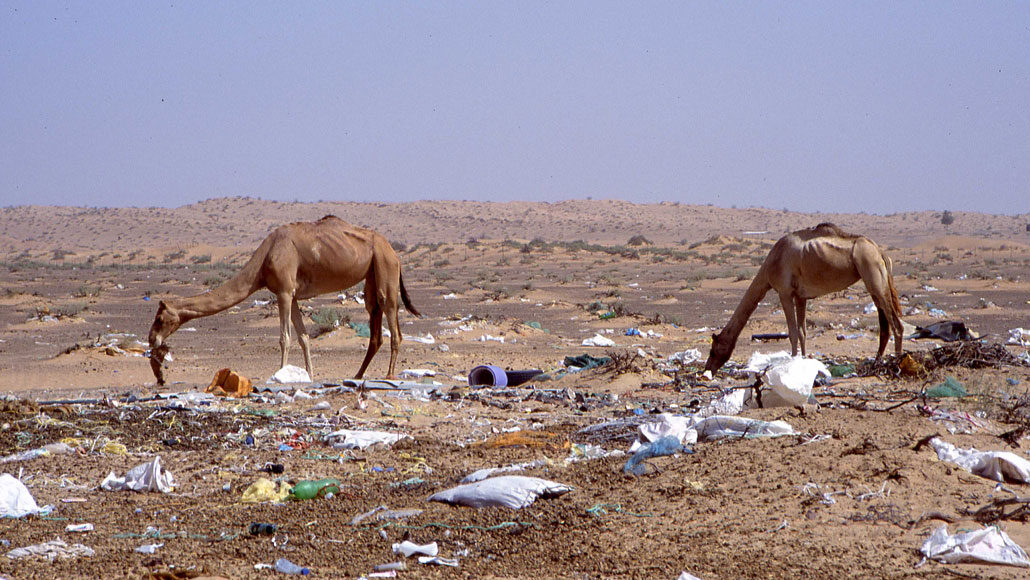Questions for “Camels have been dying after mistaking plastic for food”

These dromedary camels are foraging on desert trash, including plastic, outside Dubai, one of the United Arab Emirates. A new study suggests that plastic kills one in every 100 camels in the United Arab Emirates.
Ulrich Wernery